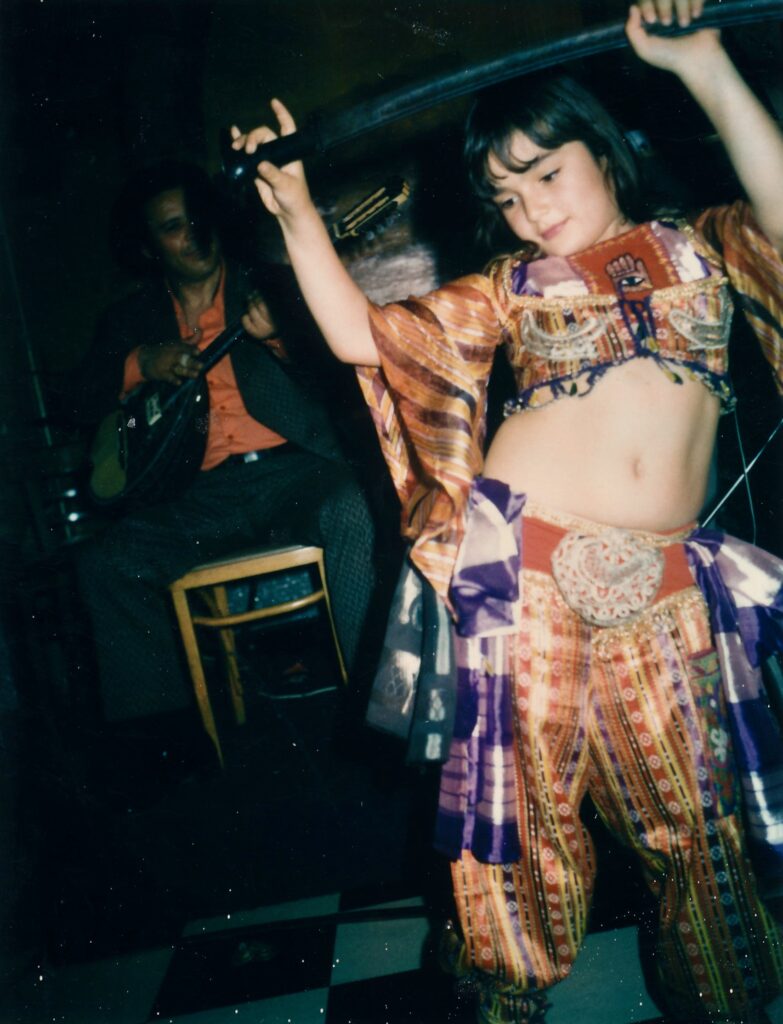Habibi: Vol. 3, No. 4 (1976)
The turn of the nineteenth century saw many European visitors in Egypt, many of them famous artists, poets, and writers of the day. Gustave Flaubert made famous his meetings with the Ghawazee dancer Kutchuk Hanem. It was for the romantic artists, however, to capture the breathtaking beauty of the odalisque. Ingres, Delacroix, and Gérôme painted with painstaking love, the dancers that they saw while living in the Middle East. It is to Gérôme that we owe the revival and popularity of the sword dance as we see it now in America. Picture if you can a musty dance hall or cabaret featuring Egyptian dancers from a variety of backgrounds. On comes the Ghawazee and, for her finale, she balances a saber on her head. From one account, it was described as performed in a sleazy cabaret, but the painting by Gérôme depicts a very secure Ghawazee, backed up by a large group of musicians and singers. She is dancing on the balls of her feet while balancing a sword on her head as she holds another sword in her hand. She seems to have been hired to dance for a private household and a group of very well-dressed select guests. The monkey looks fascinated, too. The interiors are sumptuous, and one has to look at this scene for a long time to absorb all that is fascinating. Gérôme was indeed impressed with his subject, and we are impressed by his emotional rendering.




This article was published in Jamila’s Article Book: Selections of Jamila Salimpour’s Articles Published in Habibi Magazine, 1974-1988, published by Suhaila International in 2013. This Article Book excerpt is an edited version of what originally appeared in Habibi: Vol. 3, No. 4 (1976)


